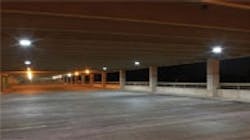Sustainability software sheds light on energy efficient design
It looks as though energy efficiency could be the next frontier for vendors of computer-aided design software. Increasingly CAD packages are building in a means of tracking changes that may impact a product's green credentials.
A recent example of how such software features get used comes from BetaLED, a large manufacturer of LED lighting for commercial buildings and parking lots. The firm is using software from SolidWorks that poses questions such as, “How much total energy will the finished product consume, which materials will be used, where will the materials come from, and can they be reused or recycled,” says Brian Kinnune, engineering manager at the Sturtevant, Wisc. company.
“SolidWorks Sustainability software ensures our designs, for instance, use less total energy by helping us track relative changes from one version of a design to the next.” says Kinnune. “It is this relative change between versions that provides an accurate indicator of environmental improvement, an area we consider integral in designing more-efficient products.”
The software includes an international life-cycle-assessment (LCA) database from PE International in Germany, a provider of services in sustainable design and LCA. LCA quantitatively assesses a product's environmental impact from raw-material procurement to production, distribution, use, disposal, and recycling.
SolidWorks Sustainability works inside SolidWorks MCAD to track the carbon footprint, air acidification, and total energy consumed that results from a product's manufacturing. Total energy consumed, for example, is a measure of the non-renewable energy sources such as petroleum and natural gas associated with a part lifecycle in units of megajoules. The value includes electricity or fuel, energy needed to obtain and process the fuel, and the energy of materials that would be released if burned. Total energy consumed represents the net calorific value of primary energy demand from the nonrenewable resources. Efficiencies in energy conversion from power, heat, and steam play-in as well.
In this case, BetaLED used SolidWorks Sustainability to document the environmental and performance capabilities of its 304 Series of commercial outdoor lighting. The systems use less than half the carbon-producing energy of traditional metal halide lamps while providing more illumination. The software helped the company design the lights such that they provide a 60% reduction in carbon footprint, air acidification, and algae-causing water contamination during their operating life.
Resources
BetaLED, www.BetaLED.com
Dassault Systèmes SolidWorks Corp., www.SolidWorks.com
PE International, www.pe-international.com
